Consider a situation similar ot that of the previous problem except that the ends of the rod slide on a pair of thick metallic rails laid parallel to the wire. At one end the rails are connected by resistor of resistance R. (a) what force is needed ot keep the rod sliding at a constant speed v? (b) in this situation what is the current in the resistance R? (c) Find the rate of heat developed in the resistor. (d) find the power delivered by the external agent exerting the force on the rod.Solution in Gujrati
(a) e.m.f produced due to the current carrying wire<br> =(mu_0 iv)/(2 pi)In((2x+1)/(2x-1))<br>Let current produced in the rod = I'=(mu_0iv)/(2 pi R)In((2x+1)/(2x-1))<br>force on the wire considering a small portion dx at a distance x.<br>dF=I'Bl<br>implies dF=(mu_0 iv)/(2 pi R)In((2x+l)/(2x-l))xx(mu_0iv)/(2 pi x)xxdx<br> dF=((mu_0i)/(2 pi ))^2 (v/R) In ((2x+l)/(2x-l))(dx)/(x)<br> F=((mu_0i)/(2 pi ))^2 (v/R) In ((2x+l)/(2x-l)) int_(x+(l/2))^(x-(l/2)) dx/x<br>=((mu_0i)/(2 pi ))^2 (v/R) In ((2x+l)/(2x-l))In ((2x+l)/(2x-l))<br>=(vR[μ0i2πIn(2x+l2x−l)]2
(b)Current,i'=μ0iv2πRIn(2x+l2x−l)
(c)Rateofheatdeveloped,w=i2R
μ0iv2πR(2x+l2×xl)]2R
=(1R)[μ0iv2πIn(2x+l2x−l)]2
(d)Powerdeveloped∈rateofheatdeveloped=i2R
=(1R)[μ0iv2πIn(2x+l2x−l)]2.
Topper's Solved these Questions
- BOOK - HC VERMACHAPTER - ELECTROMAGNETIC INDUCTIONEXERCISE - EXERCISE9videos
ELECTROMAGNETIC INDUCTION
- BOOK - HC VERMACHAPTER - ELECTROMAGNETIC INDUCTIONEXERCISE - Objective 210videos
ELECTROMAGNETIC INDUCTION
- BOOK - HC VERMACHAPTER - ELECTRIC FIELD AND POTENTIALEXERCISE - Exercises75videos
ELECTRIC FIELD AND POTENTIAL
- BOOK - HC VERMACHAPTER - ELECTROMAGNETIC WAVESEXERCISE - Exercises9videos
ELECTROMAGNETIC WAVES
Similar Questions
Shown a metallic square frame of edga a in a vertical plane. A uniform magnetic field B exists in the space in a directon perpendicular to the plane of the figure. Two boys pull the opposite corners of the square ot deform it into a rhombus. They start pulling the corners t t=0 and sisplace the corners at a uniform speed u. (a) find the induced emf in the frame at the instant when the angles at these corners reduce to 60∘. (b) find the induced current in the frame at this instatnt if the total resistance of the frame is R. (c) Find the total charge which flows through a side of the frame by the time the square is deformed into a straight line.
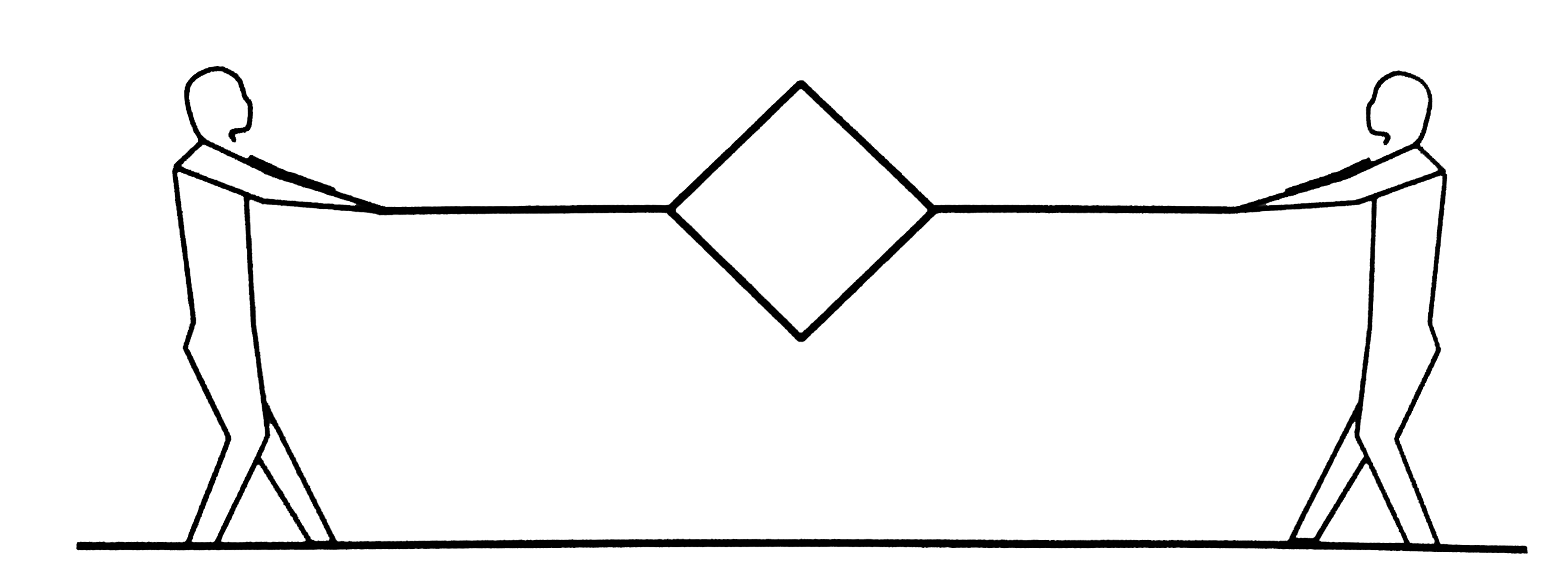 08:36View Solution
08:36View SolutionA bar magnet is moved along the axis of a copper ring placed far away from the magnet. Looking from the side of the magnet, an anticlockwise current is found to be induced in the ring. Which of the following may be true?
View SolutionFind the dimensional formula of ε0 .
04:54View SolutionShow that the dimensions of the displacement current (ε0dΦEdt) are that of an electric current.
06:01View SolutionConsider a situation similar ot that of the previous problem except that the ends of the rod slide on a pair of thick metallic rails laid parallel to the wire. At one end the rails are connected by resistor of resistance R. (a) what force is needed ot keep the rod sliding at a constant speed v? (b) in this situation what is the current in the resistance R? (c) Find the rate of heat developed in the resistor. (d) find the power delivered by the external agent exerting the force on the rod.
01:53View SolutionTwo long parallel conducting rails are placed in a uniform magnetic field. On one side, the rails are connected with a resistance R. Two rods MNandM'N' each having resistance r are placed as showing in Fig. Now on the rods MNandM'N' forces are applied such that the rods move with constant velocity v.

(ii). If in the previous problem resistance of values R1andR2 are connected on both ends as shown in Fig. current I, flowing through resistance R1 is given by02:46View SolutionA metallic rod of mass m and resistance R is sliding over the 2 conducting frictionless rails as shown in Fig. An infinitely long wire carries a current I0. The distance of the rails from the wire are b and a respectively.
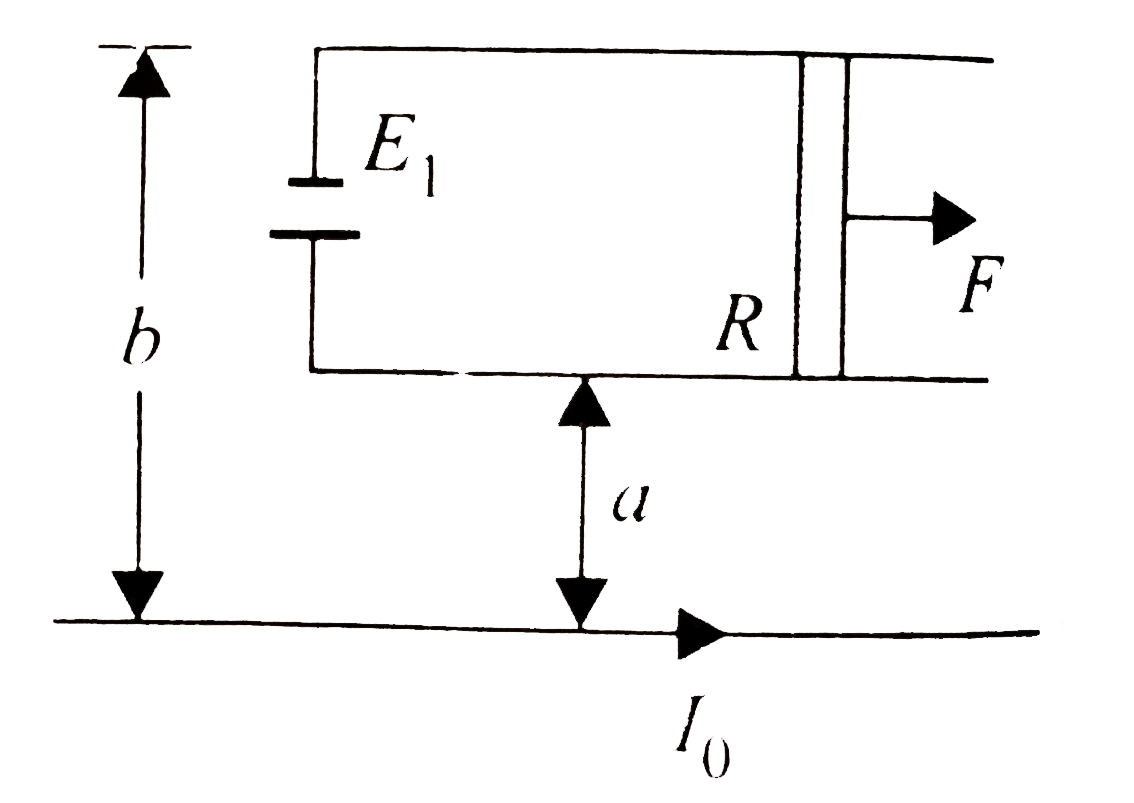
Find the value of current in the circuit if the rod slides with constant velocity v006:10View SolutionA metallic rod of mass m and resistance R is sliding over the 2 conducting frictionless rails as shown in Fig. An infinitely long wire carries a current I0. The distance of the rails from the wire are b and a respectively.
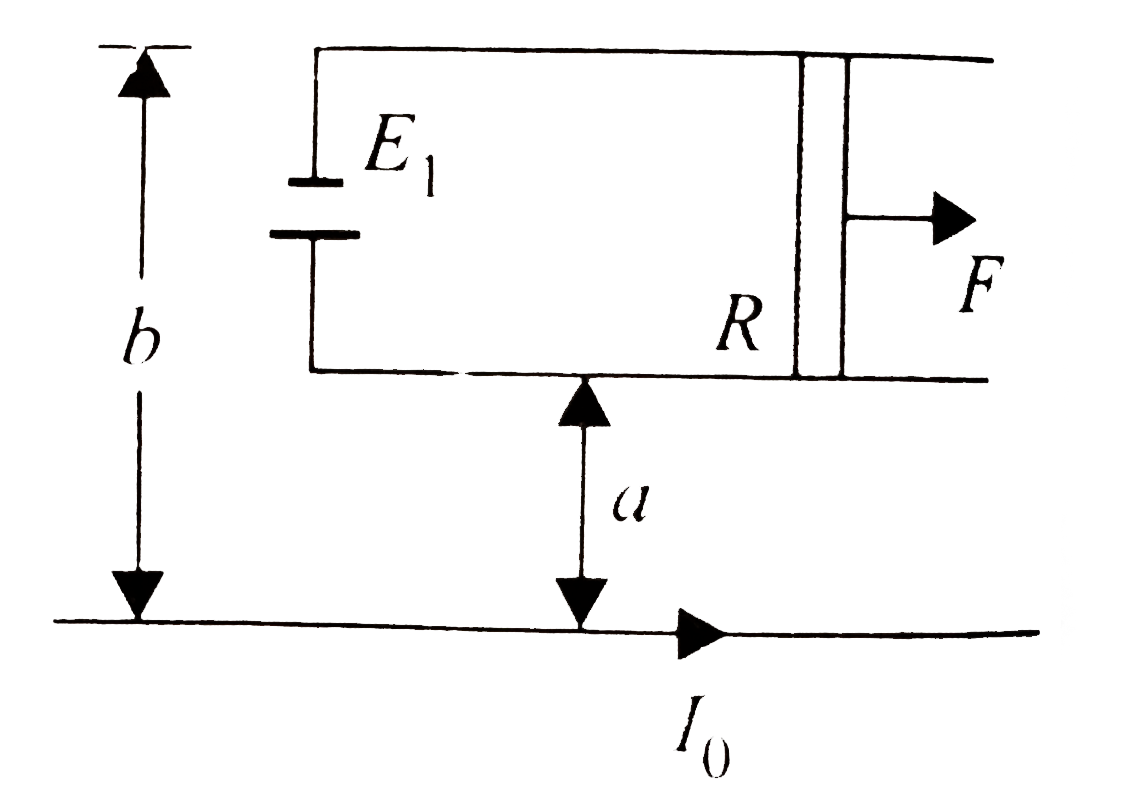
Find the value of F if the rod slides with constant velocity07:51View SolutionA pair of long, smooth, parallel, horizontal, conducting rails are joined to a cell at one end. There are no external electric or magnetic fields. A metal rod is placed on the rails. The rod will
03:59View SolutionConsider the situation shown in figure.The wire CD has a negligible resistance and is made to slide on the three rails with a constant speed of 50cm/s.Find the current in the 10Ω resistor when the switch S is thrown to (a) the middle rail (b)bottom rails.(Neglect resistance of rails)
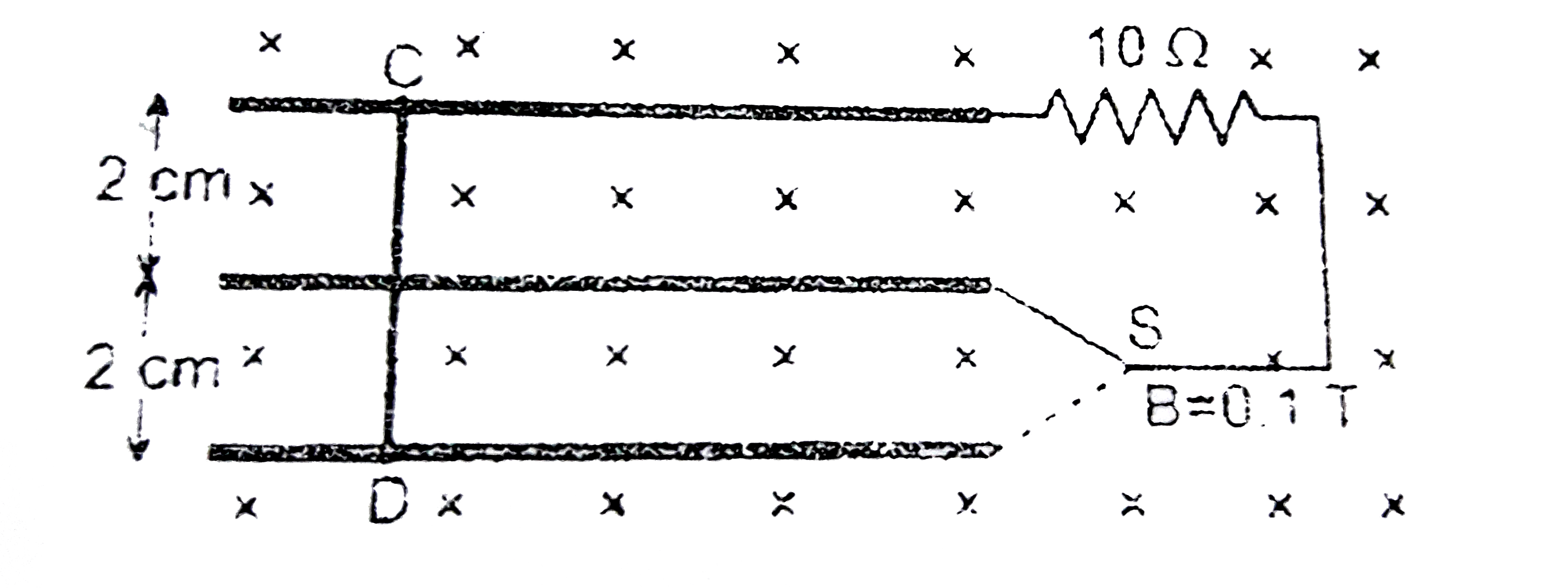 04:16View Solution
04:16View SolutionThere is a pair of fixed, parallel rails of negligible resistance in a horizontal plane, at a distance of L = 10 cm. The rails are connected, at one of their ends to an ideal battery of EMF 0.5 V, as shown in the figure. The system is placed in a vertically downward and perpendicular magnetic field of magnetic induction B = 1T. A metal rod of resistance R=10Ω is placed perpendicularly on the rails. The rod placed perpendicularly on the rails. The rod and rails are frictionless. The magnitude of force, which is to be exerted on the rod in order to move it with a constant speed of order to move it with a constant speed of 1ms−1 in the direction shown, is
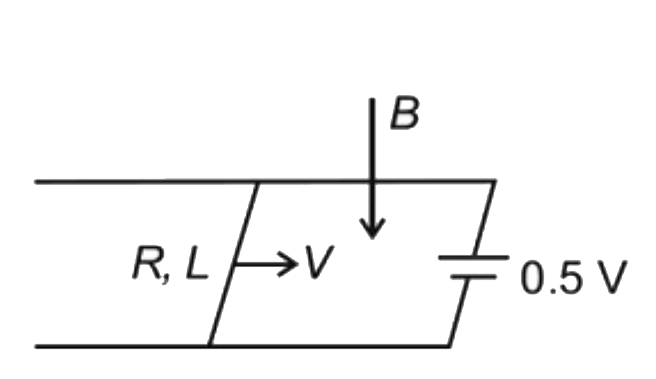 03:17View Solution
03:17View SolutionA wire ab of length l, mass m and resistance R slides on a smooth thick pair of metallic rails joined at the bottom as shown in fig. The plane of the rails makes an angle theta with the horizontal. A vertical magnetic field B exist in the region. If the wire slides on the rails at a constant speed v, then the value of B is -
07:29View SolutionShows a wire of length l which can slide on a U- shaped rail of negligible resistance. The resistance of the wire is R. The wire is pulled ot the right with a constant speed v. Draw an equivalent circuit diagram representing the induced emf by a battery. Find the current in the wire usingj this diagram.
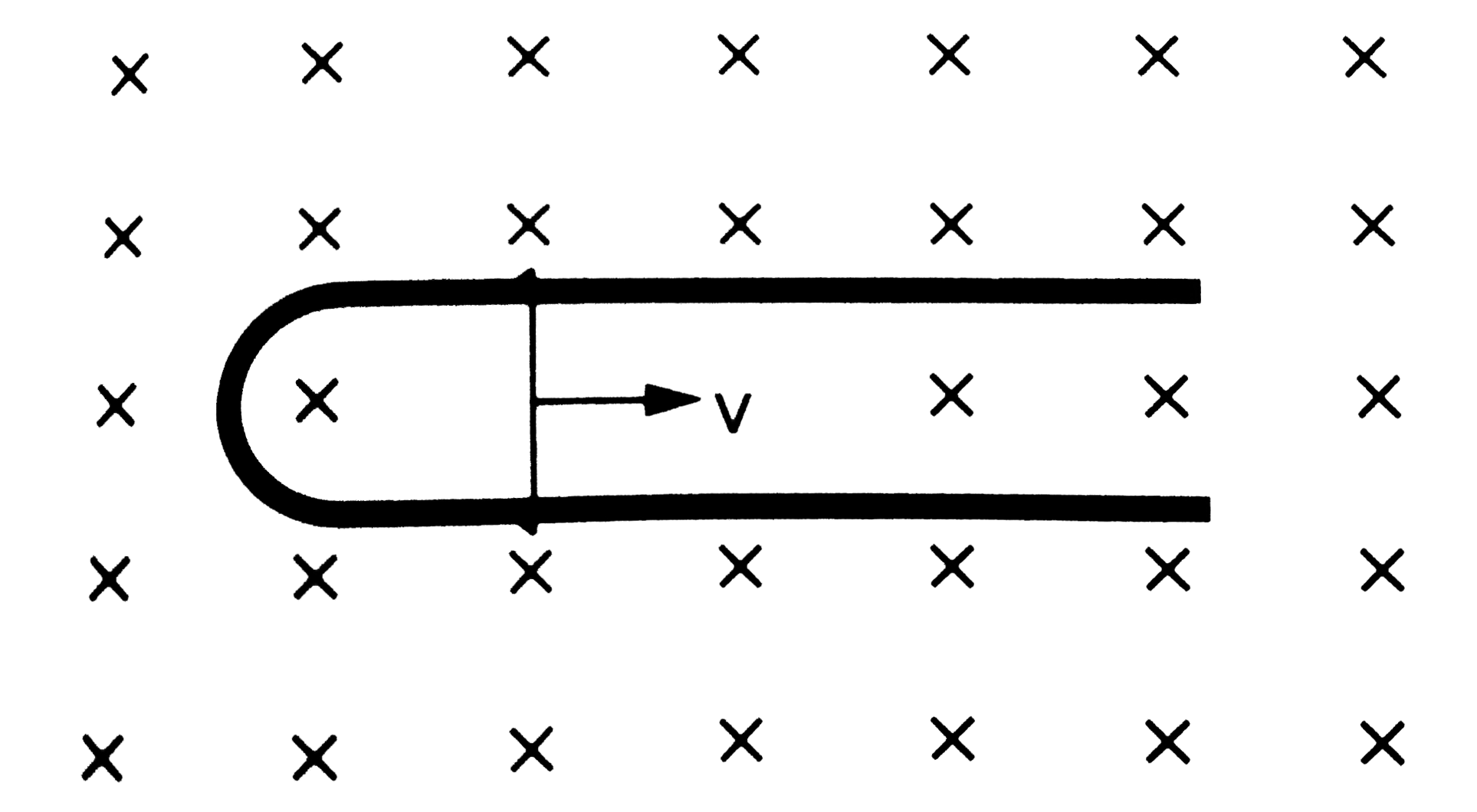
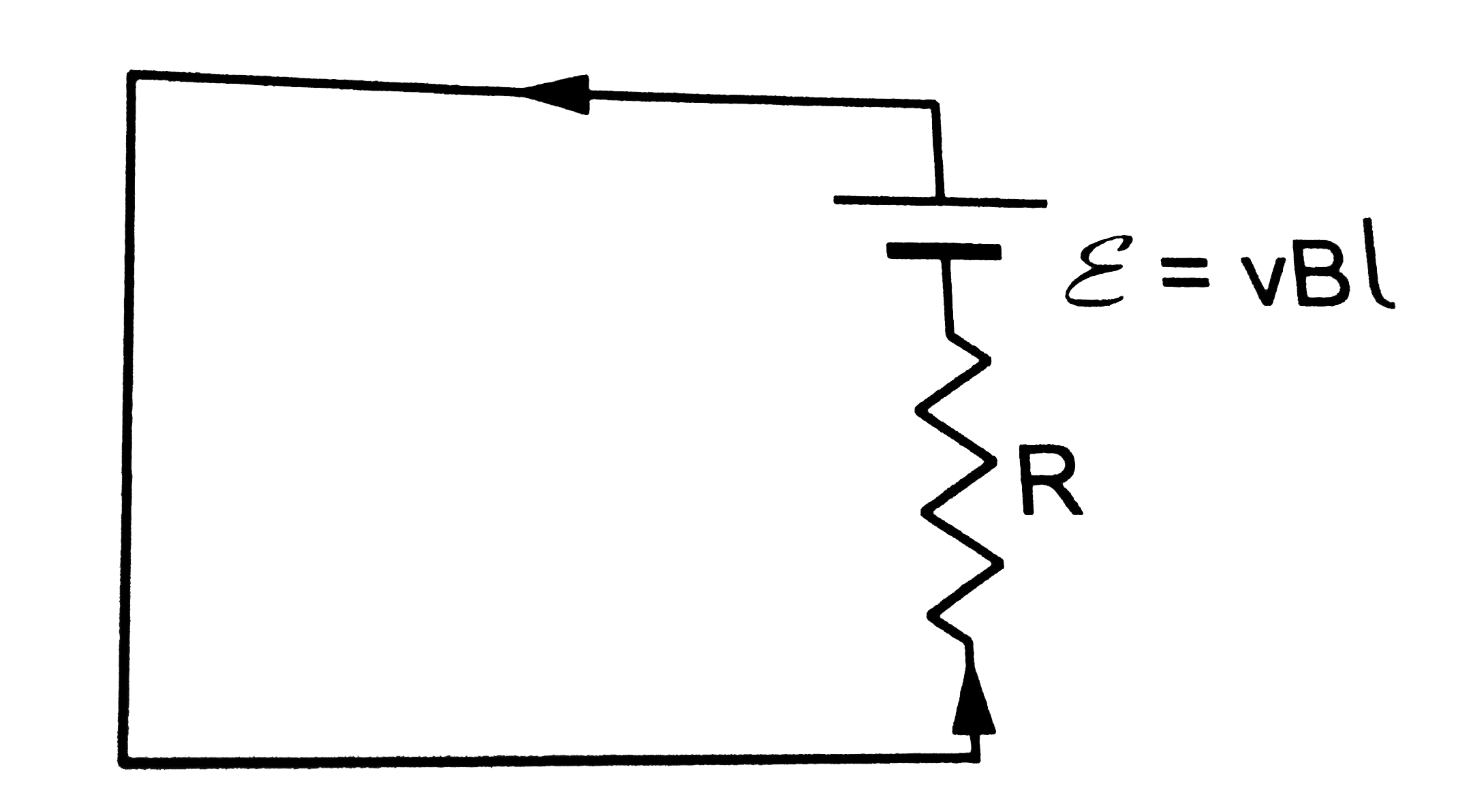 07:23View Solution
07:23View SolutionConsider the situation shown in . The wire PQ has a negligible resistance and is made to slide on the three rails with a constant speed of 5cms−1 . Find the current in the 10Ω resistor when the switch S is thrown to (a) the middle rail (b) the bottom rail.
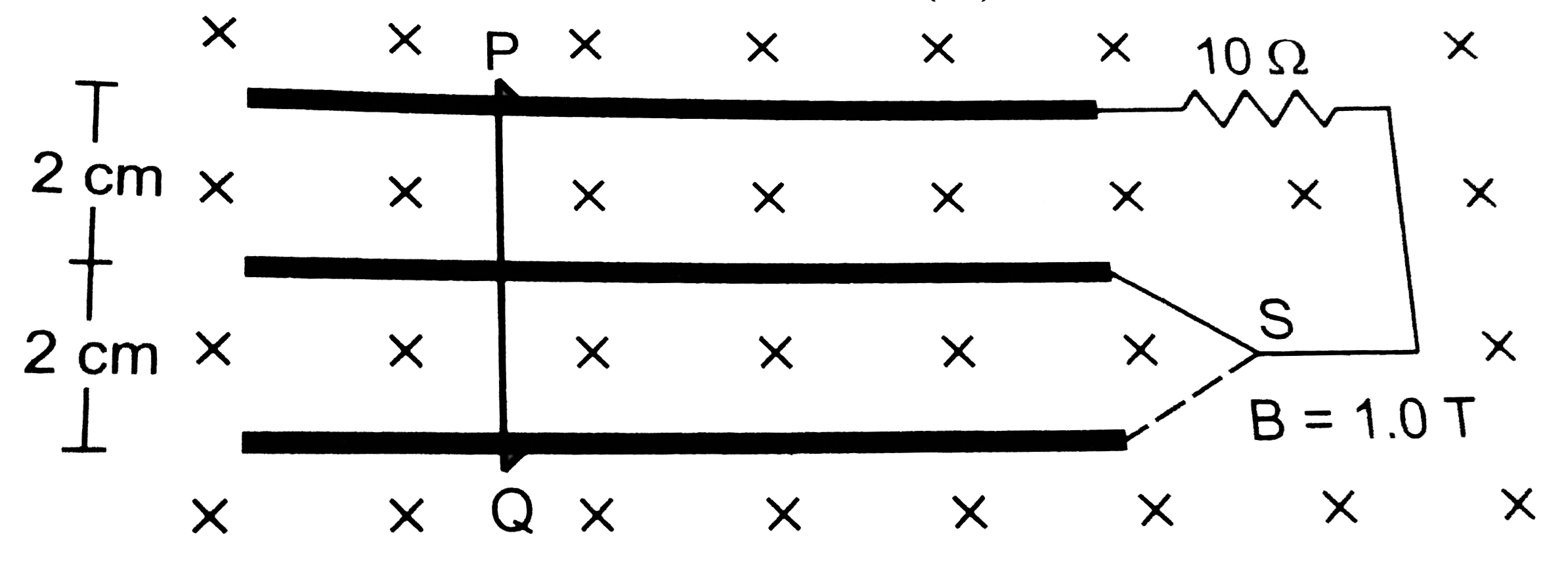 03:55View Solution
03:55View SolutionThe current generator Ig, shown in . Sends a constant current I throught the curcuti. The wire cd is fixed and ab is made ot slide on the smooth, thick rails with a constant velocity v towards right. Each of these wire has resistance r. Find the current through the wire cd.
 04:44View Solution
04:44View SolutionConsider a situation similar ot that of the previous problem except that the ends of the rod slide on a pair of thick metallic rails laid parallel to the wire. At one end the rails are connected by resistor of resistance R. (a) what force is needed ot keep the rod sliding at a constant speed v? (b) in this situation what is the current in the resistance R? (c) Find the rate of heat developed in the resistor. (d) find the power delivered by the external agent exerting the force on the rod.
06:13View Solution

